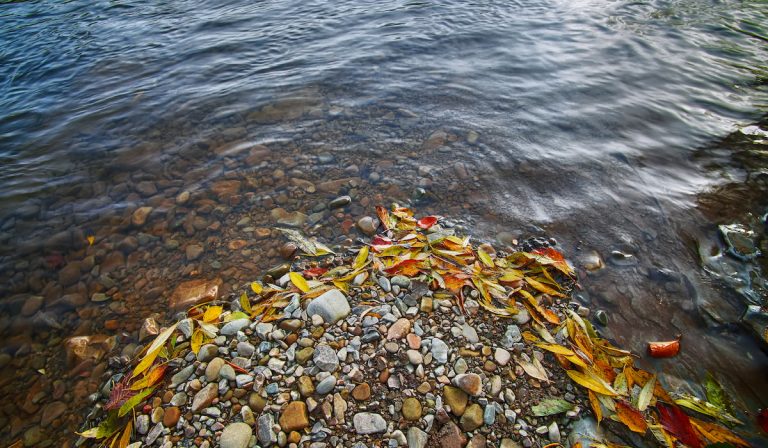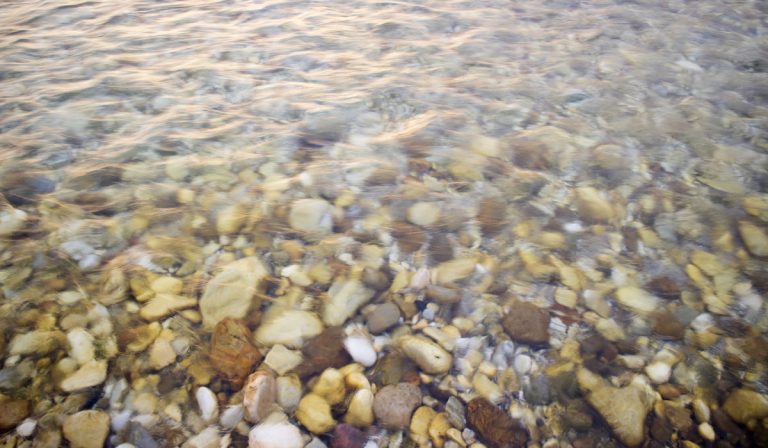How Much Do Rocks Weigh? (Complete Chart Guide)
While you can easily measure the weight of a small rock on a weighing scale, things are not as easy with larger stones. Thankfully, with information about the density and volume of a large-sized stone, you can determine its weight without placing it on a scale.
So, considering volume and density, how much do rocks weigh?
On average, a 1 cubic-foot stone would weigh around 165.2 pounds. But this does not apply to all rocks; some rocks may weigh more or less, depending on their density.
Also, depending on how you determine their volume, the weight of an irregularly-shaped stone may be an approximation.
In this article, we provide the weights of some rocks based on their types and estimated sizes. We also discuss how you can determine the weight of a stone using volume and density.

How Much Do Rocks Weigh?
While the average weight of a 1-cubic-foot rock is 165 lbs, there are variations across rock types.
As you may understand, some stones are more rigid than others. And accordingly, the densities of such rocks differ. So, the weight of a 1-cubic-foot granite rock is different from the weight of a 1-cubic-foot piece of andesite.
Of course, determining the weight of a rock by its density is subject to you knowing the rock type. But if you do not have this information, you can still get an approximate weight using the approximate size of the rock.
Below, we show you rock weights by type and rock weights by size.
Rock Weights By Type
The estimations for the following rocks are based on a volume of 1000 cm3.
Andesite
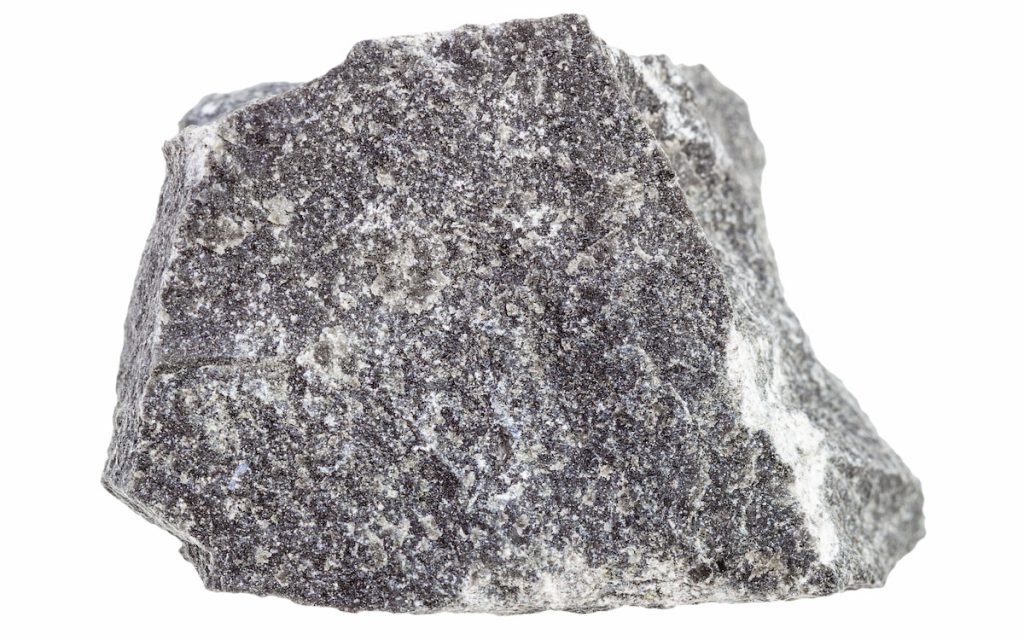
Andesite rocks have a density range between 2.4 and 2.8 g/cm3. So, a 1000 cm3 piece of andesite rock should weigh around 2400 to 2800 grams (5.3 to 6.2 pounds).
To get an actual weight instead of a range, you can work with the median of the density range. So, instead of dangling between 2.4 and 2.8 g/cm3, use 2.6 g/cm3.
Going by the above, a 1000 cm3 piece of andesite rock should weigh 2600 grams on average (5.73 pounds).
Bauxite
The density of bauxite ranges from 2.4 to 2.6 g/cm3. Accordingly, a 1000 cm3 piece of bauxite weighs about 2400 to 2600 grams (5.3 to 5.73 pounds).
Using the median density range – 2.5 g/cm3 – the weight of a 1000 cm3 piece of bauxite is 2500 grams (5.5 pounds).
Basalt
Basalt’s density falls between 2.7 and 3.3 g/cm3. So, a 1000 cm3 piece of this rock weighs between 2700 and 3300 grams (between 5.95 and 7.3 pounds).
With a median density of 3 g/cm3, 1000 cm3 basalt weighs 3000 grams (6.6 pounds).
Diorite
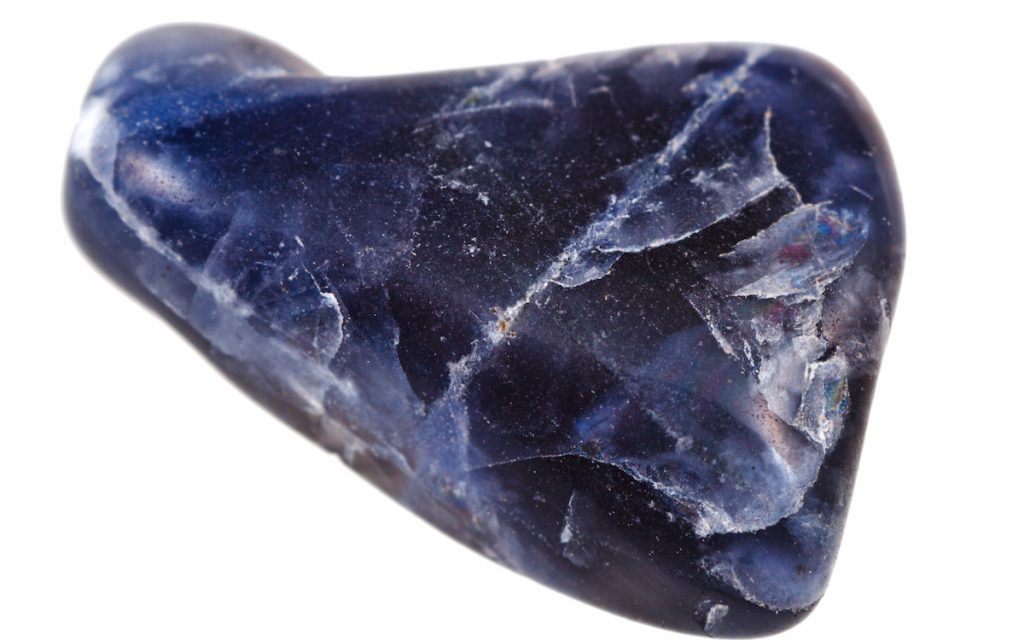
Diorite has a density range of 2.8 to 3.0 g/cm3. A 1000 cm3 piece of diorite weighs about 2800 to 3000 grams (6.2 to 6.6 pounds).
Then with the median density range of 2.9 g/cm3, 1000 cm3 of diorite weighs 2900 grams (6.4 pounds).
Emery
Emery is pretty hard, so its density is a bit higher than the rest we have seen so far. Its density range is 3.7 to 4.3 g/cm3. So, a 1000 cm3 of emery is as heavy as 3700 to 4300 grams (8.2 to 9.5 pounds).
But if we work with the median density, which is 4 g/cm3, the piece of emery weighs 4000 grams (8.8 pounds).
Gabbro
A 1000 cm3 piece of gabbro should weigh around 2700 to 3500 grams (5.95 to 7.7 pounds) since the density range of gabbro is 2.7 to 3.5 g/cm3.
Then with the median density, 3.1 g/cm3, the weight of the same piece is 3100 grams (6.8 pounds).
Gneiss
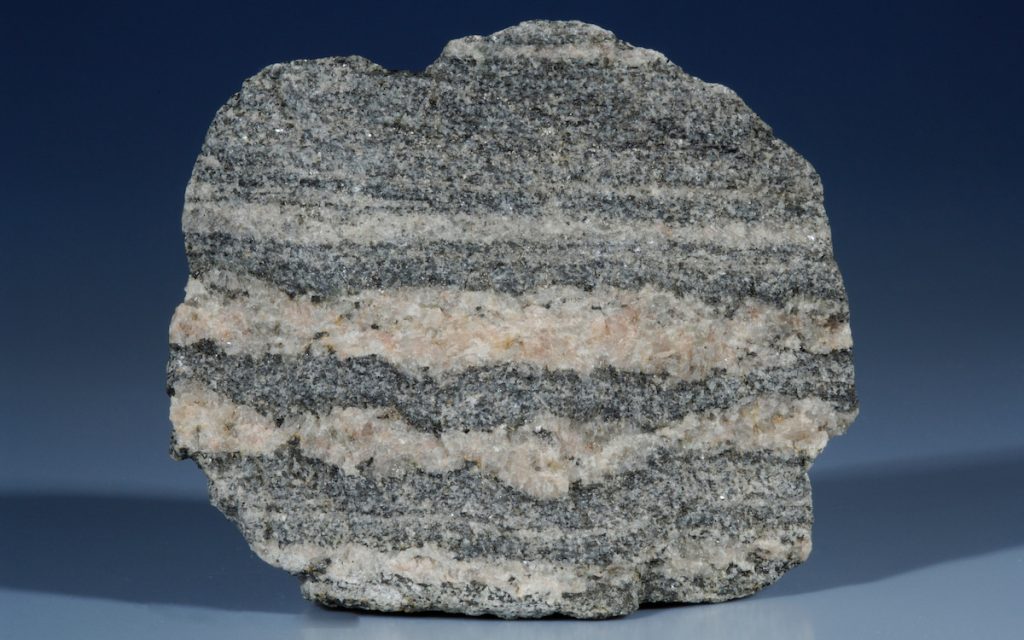
With a volume of 1000 cm3, a piece of gneiss weighs about 2600 to 2900 grams (5.73 to 6.4 pounds).
The density range of gneiss is 2.6 to 2.9 g/cm3, and the median density is 2.75 g/cm3. So, on average, a 1000 cm3 piece of gneiss weighs 2750 grams (6.1 pounds).
Granite
The density range of granite is 2.50 to 2.81 g/cm3, so a 1000 cm3 granite weighs between 2500 and 2810 grams (5.5 and 6.2 pounds).
The median density of granite is 2.66 g/cm3. So, using the median density to calculate, the weight of 1000 cm3 granite is 2660 grams (5.9 pounds).
Pumice
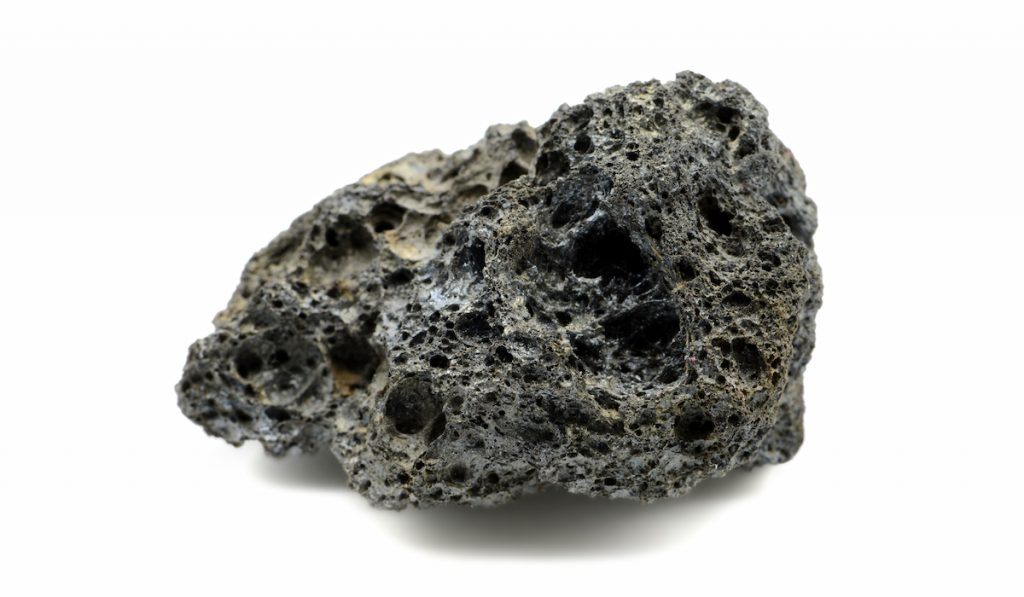
Pumice has a density range of 0.7 to 1.2 g/cm3. So, a 1000 cm3 piece of pumice weighs about 700 to 1200 grams (1.5 to 2.6 pounds).
Then with a median density range of 0.95 g/cm3,1000, cm3of pumice weighs 950 grams (2.1 pounds).
Rhyolite
With a volume of 1000 cm3, a piece of rhyolite weighs about 2350 to 2700 grams (5.18 to 5.95 pounds).
The density range of rhyolite is 2.35 to 2.7 g/cm3, and the median density is 2.53 g/cm3. So, on average, a 1000 cm3 piece of rhyolite weighs 2530 grams (5.58 pounds).
| Rock Type | Average Weight for a 1000 cm3 piece (pounds) | Class of Rock |
| Andesite | 5.73 | Igneous |
| Bauxite | 5.5 | Sedimentary |
| Basalt | 6.6 | Igneous |
| Diorite | 6.4 | Igneous |
| Emery | 8.8 | Granular |
| Gabbro | 6.8 | Igneous |
| Gneiss | 6.1 | Metamorphic |
| Granite | 5.9 | Igneous |
| Pumice | 2.1 | Igneous |
| Rhyolite | 5.58 | Igneous |
Rock Weights By Size
Pebble-Sized Rocks
According to Rockhound Resource, pebble-sized rocks weigh 1 gram (0.035 ounces) on average. But the weights may range from 0.1 grams to 3 grams (0.0035 to 0.11 ounces).
Rocks equal to or smaller than the diameter of a penny qualify as pebbles.
Landscaping Rocks
Landscaping rocks are basically rocks used in landscaping. They weigh 40 grams (1.41 ounces) on average. Of course, there will be some landscaping rocks smaller or bigger than this. But their weights shouldn’t be far off.
Basketball-Sized Rocks
On average, standard basketballs have a diameter of 9.47 inches. This makes their average volume 0.258 cubic feet.
Multiplying this volume by the average weight of a 1-cubic-feet stone (165 pounds) estimates the average weight of basketball-sized rocks.
So, on average, a basketball-sized rock should weigh around 42.57 pounds.
Soccer-Ball-Sized Rocks
With a diameter of 8.8 inches, soccer balls have an average volume of around 0.212 cubic feet. When multiplied by 165 pounds, the result is 34.98 pounds.
So, on average, a soccer-ball-sized rock will weigh 34.98 pounds.
| Size | Average Weight (grams) | Average Weight (pounds) | Average Weight (ounces) |
| Pebble-Sized Rocks | 1 | – | 0.035 |
| Landscaping Rocks | 40 | – | 1.41 |
| Basketball-Sized Rocks | – | 42.57 | 681 |
| Soccer-Ball-Sized Rocks | – | 34.98 | 560 |
How to Calculate the Weight of a Rock Using Density and Volume
Calculating the weight of rocks using their density and volume is pretty straightforward. Just use the following formula:
Mass of a rock = density of the rock x volume of the rock
When using the formula above, be wary of the units.
- If the density of the rock is given in g/cm3, you should work with volume in cm3. The mass you will calculate will be in g (grams).
- If the density of the rock is given in pounds/cubic feet, you should work with volume in cubic feet. The mass you will calculate will be in pounds.

How to Determine the Volume of a Rock
We will explain three ways through which you can determine the volume of a rock:
Water Displacement
You need a graded container (preferably a measuring cylinder or beaker) for this method. Ensure the container is wide enough to contain the rock.
- Fill the container halfway with water.
- Check the grading on the side of the container that corresponds with the water level. Record it as the starting volume of the water (V1).
- Gently insert the stone into the water.
- Check the grading of the container that corresponds with the new water level. Record it as the displaced volume of the water (V2).
- Subtract the V1 from V2, and you’ll get the volume of the rock.
This method is more accurate than the other two. But if you cannot lift the rock, you may be unable to use it.
Compare the Rock to an Item of Similar Shape and Size
If the rock you have is about the size of a basketball, you can equate its volume to that of a basketball.
Similarly, if the stone is about the size of a soccer ball, you can equate its volume to that of a soccer ball.
This method has lower accuracy. But it is less demanding.
Measure the Dimensions of the Rock

You can determine the volume of a piece of rock by measuring its dimensions. To do this, get a measuring tape or a ruler. Then measure the length, width, and height of the stone.
Rocks have irregular surfaces. So, when measuring any dimension, ensure you measure the longest distance between the two reference points. In other words, the length should be the longest distance between any two points on the rocks, the width should be the broadest distance, and the height should be the highest distance.
Once you determine the length, width, and height of the stone. Multiply all three dimensions together, and you get the approximate volume of the rock.
Final Thoughts
The average 1-cubic-foot rock weighs anywhere around 165 pounds. This value can be higher or lower for individual stones with the same volume.
When volume is constant, the weight of rocks depends on their density since not all of them have the same internal structure.
Resources
- https://rockhoundresource.com/how-much-do-rocks-weigh-pictures-examples-calculations/
- https://www.engineeringtoolbox.com/minerals-specific-gravity-d_1644.html
- https://gpg.geosci.xyz/content/physical_properties/tables/density_igneous_rocks.html
- http://cameo.mfa.org/wiki/Bauxite
- https://www.thoughtco.com/densities-of-common-rocks-and-minerals-1439119
- http://cameo.mfa.org/wiki/Emery
- https://volcanoes.usgs.gov/volcanic_ash/density_hardness.html
- https://www.stack.com/a/basketball-sizes
- https://sciencing.com/calculate-volume-stone-7805263.html
- https://www.hunker.com/13425320/how-to-calculate-weight-of-a-rock
- https://geology.com/rocks/andesite.shtml
- https://www.sandatlas.org/bauxite/
- https://www.britannica.com/science/basalt




